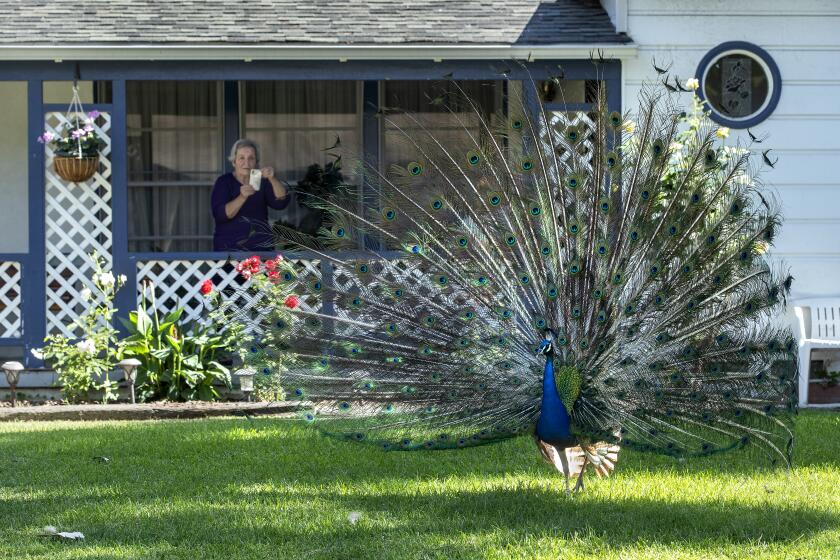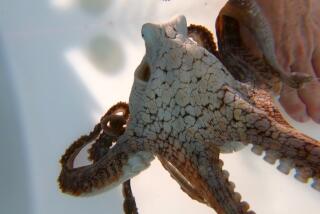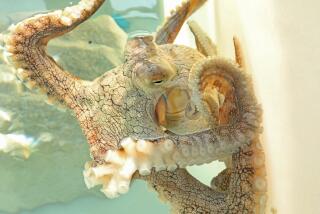It is now a crime to feed peacocks in unincorporated L.A. County, some cities
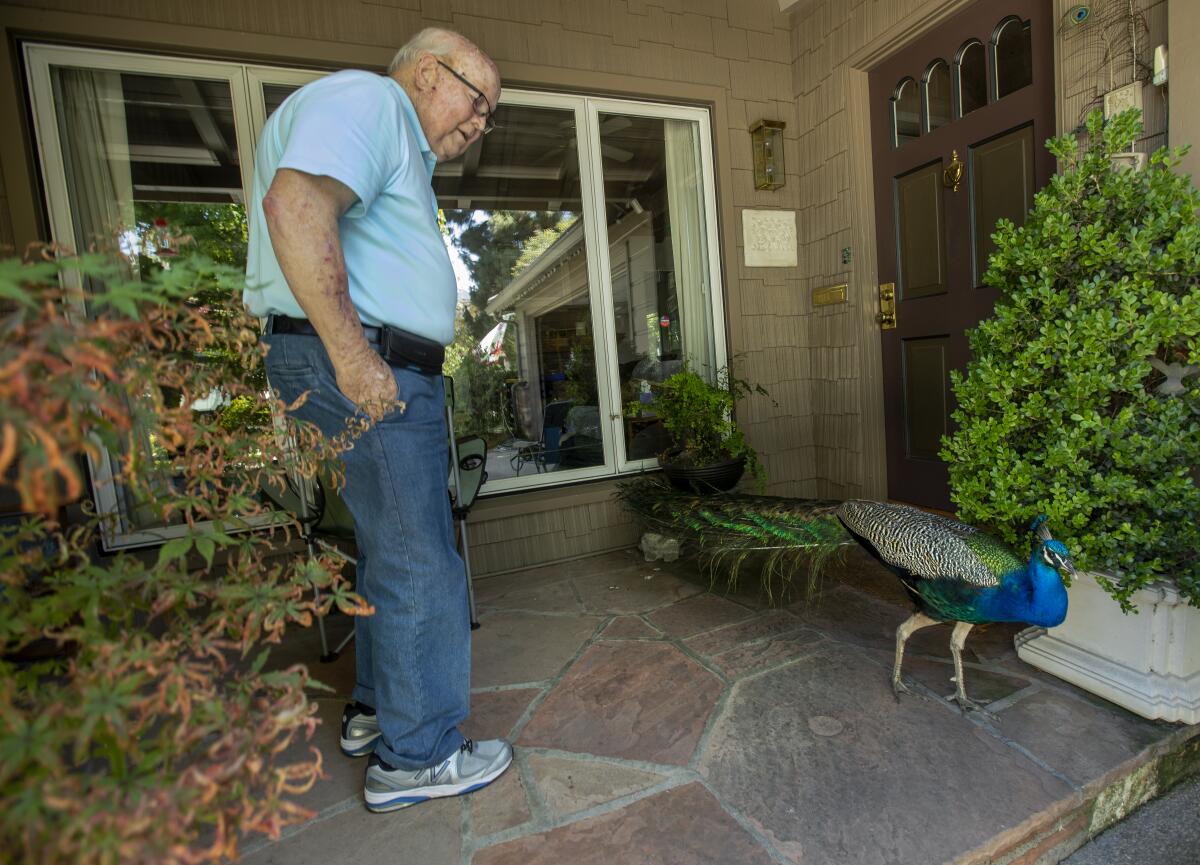
Peacocks have been troublesome residents of the Palos Verdes Peninsula and the San Gabriel Valley for decades, destroying gardens, blocking traffic, leaving droppings on roofs and screeching.
Much to neighbors’ chagrin, some residents leave out seeds and scraps of bread for the flamboyantly feathered birds.
On Tuesday, the Los Angeles County Board of Supervisors decided that feeding peacocks is a crime, making it a misdemeanor in unincorporated areas and the 44 cities that contract with the county animal control department.
Misdemeanors are punishable by up six months in jail, a fine of up to $1,000 or both.
Their feathery displays adorn and agitate a swath of the San Gabriel Valley, but peacocks may soon face the wrath of the Board of Supervisors.
Contract cities can opt out of the ordinance if they wish, while unincorporated areas cannot, said Marcia Mayeda, director of the L.A. County Department of Animal Care and Control.
Some cities, including Pasadena and Arcadia, already prohibit feeding peacocks, according to Supervisor Kathryn Barger, who spearheaded the ordinance.
Among the peacock-rich communities covered by the ordinance are Rancho Palos Verdes and Rolling Hills, as well as Chapman Woods near Pasadena.
“If a city said, ‘We don’t want to adopt this. We have a different way of handling peacocks,’ we would agree to that,” Mayeda said.
Mayeda said animal control officers generally leave peacocks alone, as “they’re a difficult bird to capture.”
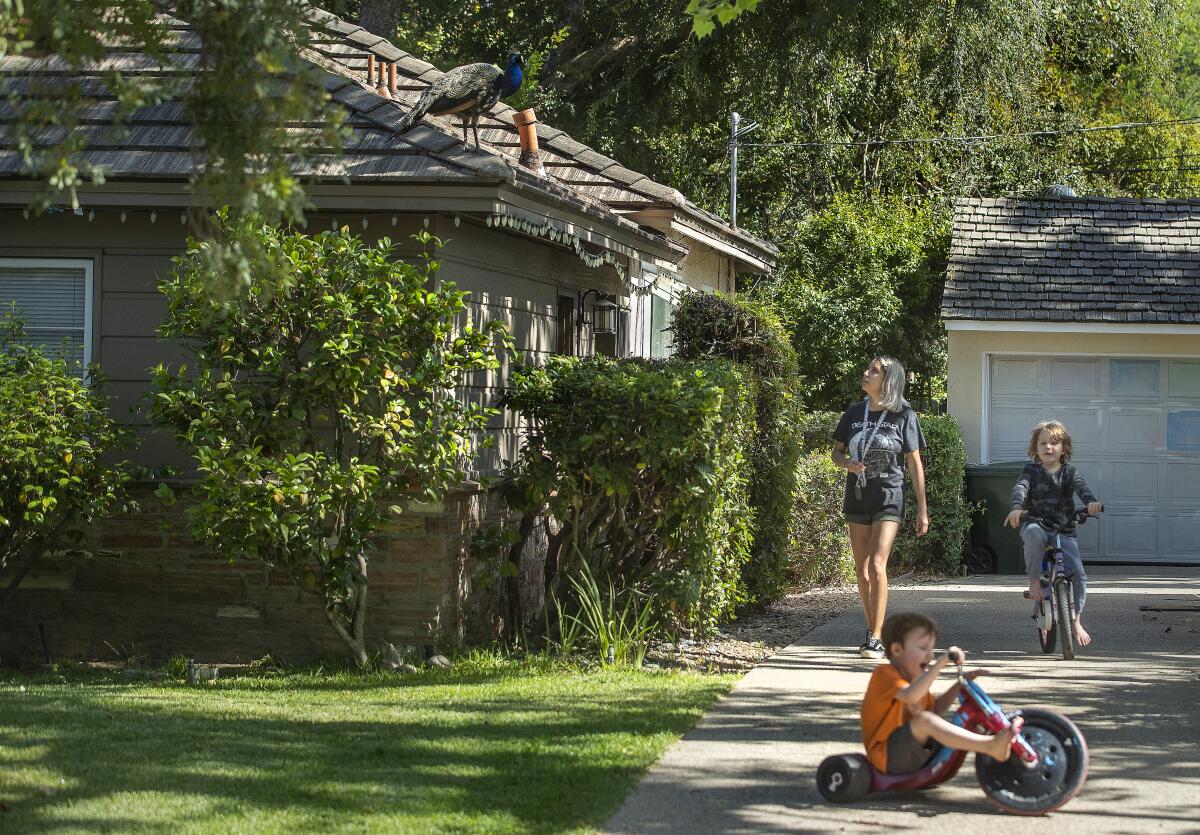
Instead, the county will contract with wildlife expert Mike Maxcy, who worked at the Los Angeles Zoo for 33 years and has relocated peafowl to ranches and resorts since 1999.
Peafowl are resourceful, “kind of like the raccoons of the bird world,” eating practically anything and everything, Maxcy said.
Once they make it to adulthood, they don’t face many predators, other than humans.
Near the county arboretum in Arcadia, ostentations — the term for groups of peafowl — have been spotted chasing coyotes.
Feeding peacocks, which are not native to Southern California, causes the population to increase, with the birds laying more eggs if resources are abundant, Maxcy said.
L.A. County’s peacock population has been inflated by years of human feeding, he said.
Hence, the problem posed by their fans.
“They’re all in very nice neighborhoods with very nice homes and tall majestic old pine trees (where they roost), and dare I say, animal fanatics that love to feed them,” Maxcy said.
More to Read
Sign up for Essential California
The most important California stories and recommendations in your inbox every morning.
You may occasionally receive promotional content from the Los Angeles Times.
